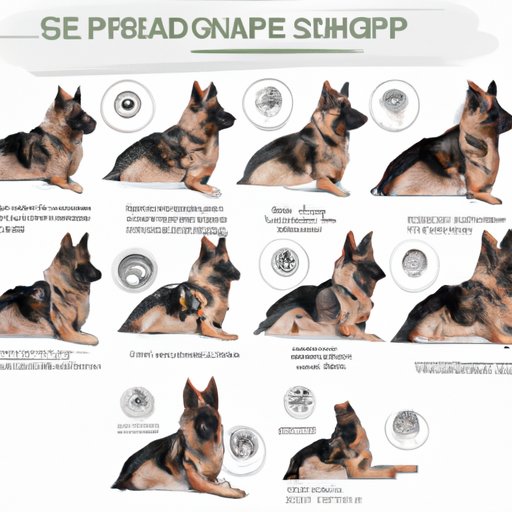
How to Draw a German Shepherd: A Step-by-Step Guide
If you’re looking to learn how to draw a German Shepherd, you’re in the right place. This guide provides a step-by-step tutorial on how to create an accurate and realistic illustration of this beloved breed. Whether you’re a beginner or more advanced artist, this guide will give you the tips and tricks you need to create a stunning piece of art.
Step-by-Step Guide
Before you begin, you’ll need a few things: paper, a pencil, an eraser, and a reference picture of a German Shepherd. Once you have all of these, you’re ready to get started.
1. Start with the head. Draw a circle for the snout and a larger circle for the head. Connect the two with a U-shape for the neck.
2. Add the ears. German Shepherds have large, pointy ears that stand upright. Draw them on top of the head.
3. Draw the eyes and nose. German Shepherds have almond-shaped eyes and a black nose. Make sure the eyes are evenly spaced and the nose is centered between them.
4. Add the body. Draw a long, curved line for the back and a smaller curved line underneath for the stomach. Connect the two with a line for the hind leg.
5. Draw the legs. German Shepherds have muscular legs that are slightly bent. Draw them in a realistic position, with the paws pointing forward.
6. Draw the tail. German Shepherds have long, bushy tails that curve slightly.
7. Add texture. Use short, quick strokes to add texture to the fur. German Shepherds have short, dense fur.
Using Reference Pictures
If you’re having trouble getting the proportions right, or if you want to add more detail to your drawing, reference pictures can be very helpful. Look for pictures of German Shepherds from different angles and in different poses. This will help you get a better idea of the dog’s features and characteristics.
When using reference pictures, pay attention to the dog’s muscle definition and bone structure. This will help you create a more realistic illustration.
Focus on Key Features
German Shepherds have several key features that make them easily recognizable. These include their facial structure, ear shape, body proportions, and fur texture.
To draw a realistic German Shepherd, it’s important to pay attention to these features. For example, German Shepherds have a distinctive snout shape with a long bridge and squared-off tip. Their ears are large and pointed, standing upright on their head. Their bodies are muscular and their legs are strong.
When drawing their fur texture, remember that German Shepherds have short, dense fur that stands slightly away from their body. Use short, quick strokes to create a layered look.
Varying Skill Levels
Whether you’re a beginner or more advanced artist, you can adjust the difficulty level of your drawing to match your skill level. If you’re a beginner, start with basic shapes and work your way up to more advanced details. If you’re more advanced, focus on adding more detail and texture to your illustration.
Remember, practice makes perfect. The more you draw German Shepherds, the better you’ll become at capturing their unique features and characteristics.
Emphasize Creativity
Finally, don’t be afraid to get creative with your drawing. While it’s important to capture the essence of a German Shepherd, there’s no one “right” way to draw them. Experiment with different styles and approaches until you find one that works for you.
To get inspired, look at different interpretations of German Shepherds by other artists. You can also try stylizing your drawing by using different colors or incorporating unique accents, such as a bandana or collar.
Conclusion
Drawing a German Shepherd can be a challenge, but with the right tools and techniques, it’s a rewarding experience. Use this guide as a starting point, and don’t be afraid to experiment with your own style and creativity. Whether you’re a beginner or a more advanced artist, there’s always something new to learn.
So grab your pencil and start drawing. Who knows, you may discover a newfound love for German Shepherds – and drawing in general.




